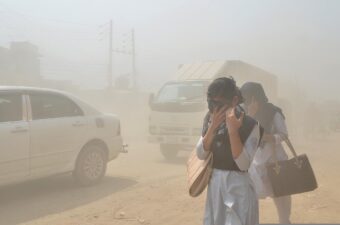
Air pollutants come from a variety of sources, including human-caused emissions – like fossil fuel use in vehicles and cooking – and natural sources, such as dust storms and smoke from wildfires and volcanoes.
Air quality monitors are outfitted with sensors designed to detect specific pollutants. Some use lasers to scan particulate matter density in a cubic metre of air, while others rely on satellite imaging to measure energy reflected or emitted by the Earth.
Pollutants tied to human and environmental health impacts include PM2.5, PM10, ground-level ozone, nitrogen dioxide and sulfur dioxide. The greater the density of pollutants in the air, the higher the Air Quality Index (AQI), a scale that runs from zero to 500. An AQI of 50 or below is considered safe, while readings above 100 are deemed unhealthy. According to UNEP partner IQAir, only 38 of 117 countries and regions averaged healthy AQI readings in 2021.
More:
How is air quality calculated?
Air quality databanks process readings from governmental, crowd-sourced and satellite-derived air quality monitors to produce an aggregated AQI reading. These databases may weigh data differently based on reliability and the type of pollution measured.
UNEP, in collaboration with IQAir, developed the first real-time air pollution exposure calculator in 2021, which combines global readings from validated air quality monitors in 6,475 locations in 117 countries, territories, and regions. The database prioritizes PM2.5 readings and applies artificial intelligence to calculate nearly every country’s population exposure to air pollution on an hourly basis.
Source: UNEP



